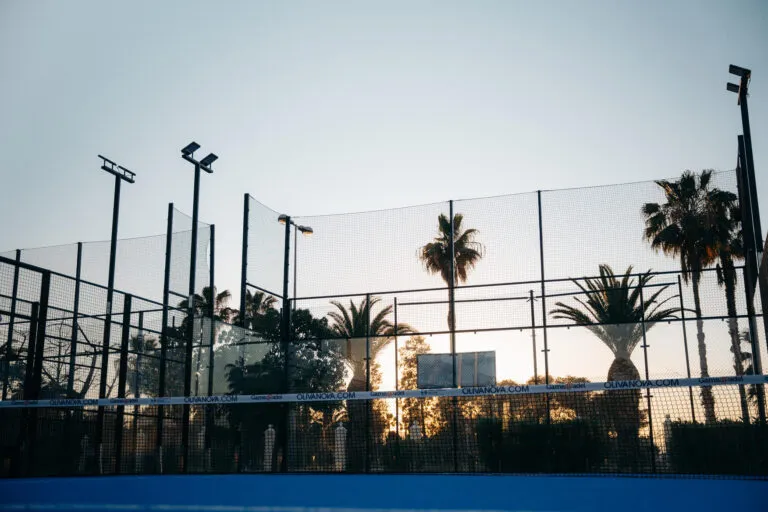

Padel Tennis Racket Factories Crafting the Future of Padel
Padel tennis, a hybrid of tennis and squash, has surged in popularity over the past decade, prompting a growing demand for high-quality equipment—chiefly, padel tennis rackets. As this exhilarating sport captures the hearts of enthusiasts around the globe, factories dedicated to the production of padel tennis rackets play a pivotal role in shaping the game. Understanding the intricacies of these factories unveils not only the manufacturing process but also the innovation and craftsmanship involved in creating these essential sporting tools.
The Rise of Padel Tennis
Originating in Mexico in the late 1960s and gaining traction across Europe, particularly in Spain and Sweden, padel tennis has become a staple of recreational sports. The game is played on an enclosed court, and its unique rules and dynamic gameplay attract players of all ages and skill levels. With its rapid rise in popularity, the demand for specialized equipment, especially rackets designed specifically for padel tennis, has increased exponentially. This has led to the establishment of numerous factories dedicated to the production of these rackets.
Anatomy of Padel Rackets
Padel rackets are distinct from traditional tennis rackets. They are smaller, have a solid frame without strings, and are typically made from composite materials that enhance durability and performance. The engineering behind padel rackets includes factors such as weight, balance, aerodynamics, and grip, all of which contribute to a player's ability to excel on the court. This complexity necessitates a meticulous manufacturing process, which factory workers and engineers handle with precision.
Manufacturing Process
The manufacturing process of padel tennis rackets is a testament to modern engineering and artisanal skills. Factories often begin with raw materials, including carbon fiber, fiberglass, and various types of foam. The first step involves laying out the carbon or fiberglass layers in specific patterns, which gives the racket its strength and flexibility. Advanced technology, including computer numerical control (CNC) machines, is often employed to cut these materials to exact specifications.

After the layering process, the materials are bonded together using specialized resins and subjected to heat and pressure in a mold, creating the racket’s final structure. Each racket undergoes quality checks throughout production, ensuring that they meet rigorous standards for performance and safety. To cater to the diverse preferences of players, many factories produce a range of models, varying in weight, shape, and firmness.
Innovation and Sustainability
As the sport continues to evolve, so too does the technology employed in racket manufacturing. Many factories are at the forefront of innovation, experimenting with new materials and designs to enhance performance. Concurrently, there is a growing focus on sustainability within the industry. More factories are adopting eco-friendly practices, utilizing recycled materials, and minimizing waste in the production process.
Furthermore, collaboration between factories and professional players has become increasingly common. Feedback from athletes can lead to improved designs and performance characteristics, ensuring that the rackets meet the demands of competitive play. This synergy between manufacturers and players helps drive the evolution of padel racket technology.
The Future of Padel Racket Manufacturing
The future of padel tennis racket manufacturing looks promising, with potential for further growth in both domestic and international markets. As the sport continues to gain a global following, factories are poised to benefit from increased demand. With advancements in technology and a commitment to sustainability, the factories that produce padel tennis rackets will not only contribute to the present but also shape the future of the sport.
In conclusion, padel tennis racket factories are key players in the flourishing world of padel. Their expertise, innovation, and dedication to quality ensure that players have access to the best possible equipment, enhancing the enjoyment of the sport and its accessibility to players worldwide. As padel tennis continues to thrive, the factories behind the rackets will undoubtedly play a critical role in its ongoing success.
High-Performance Industrial Flooring Solutions China Paddle Tennis Court for Sale
High-Performance Industrial Flooring Solutions Durable & Cost-Effective
Homogeneous Transparent Floor – Durable & Stylish Rubber Floor Solutions
Premium Homogeneous Transparent Floor for Durable & Stylish Spaces Rubber Floor Solutions
Premium Sports Floor Solutions Durable PVC Sports Floor & Rubber Floor for Gyms
Durable Rubber Composite Floor Premium Rubber Floor & Mats Solutions